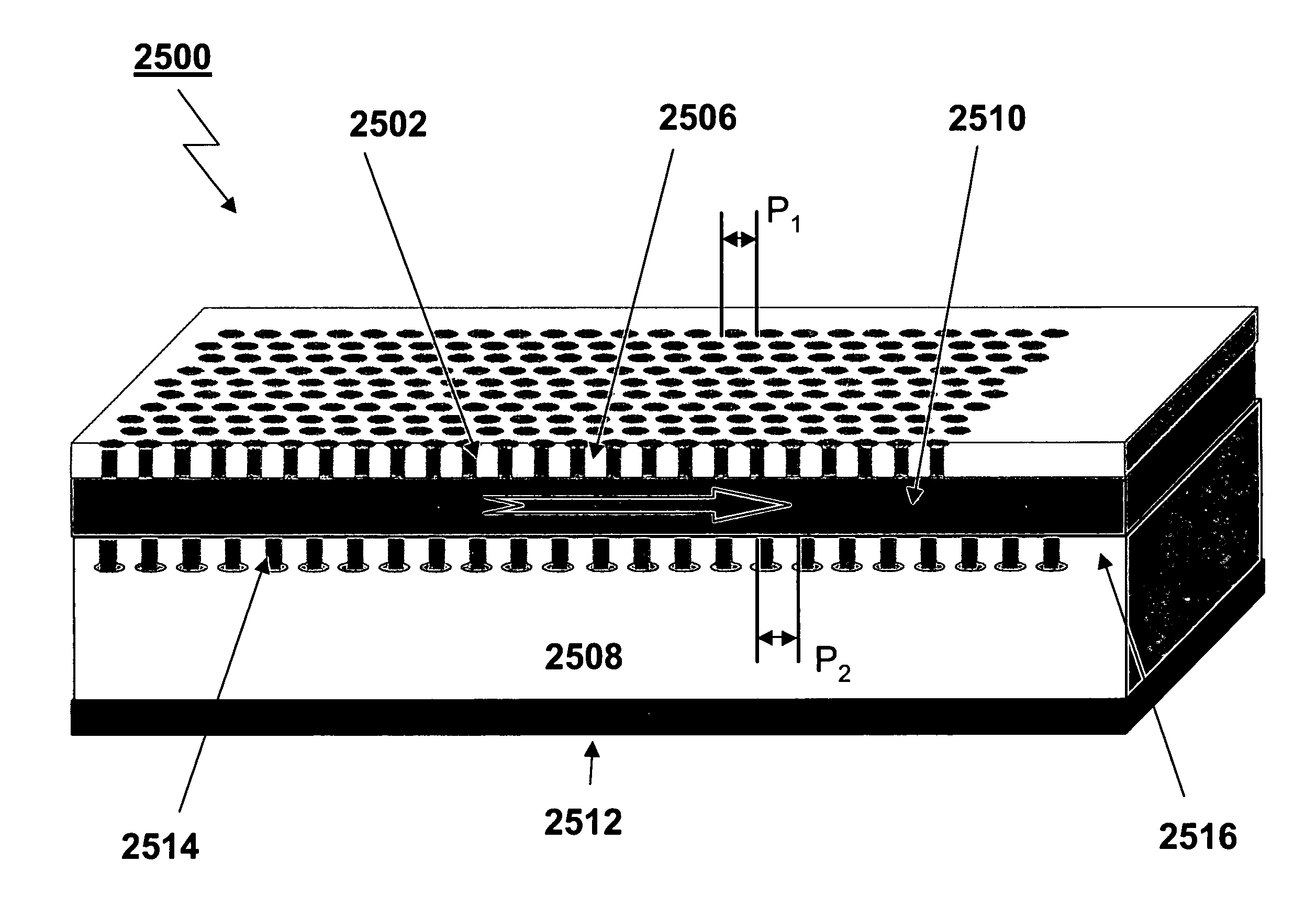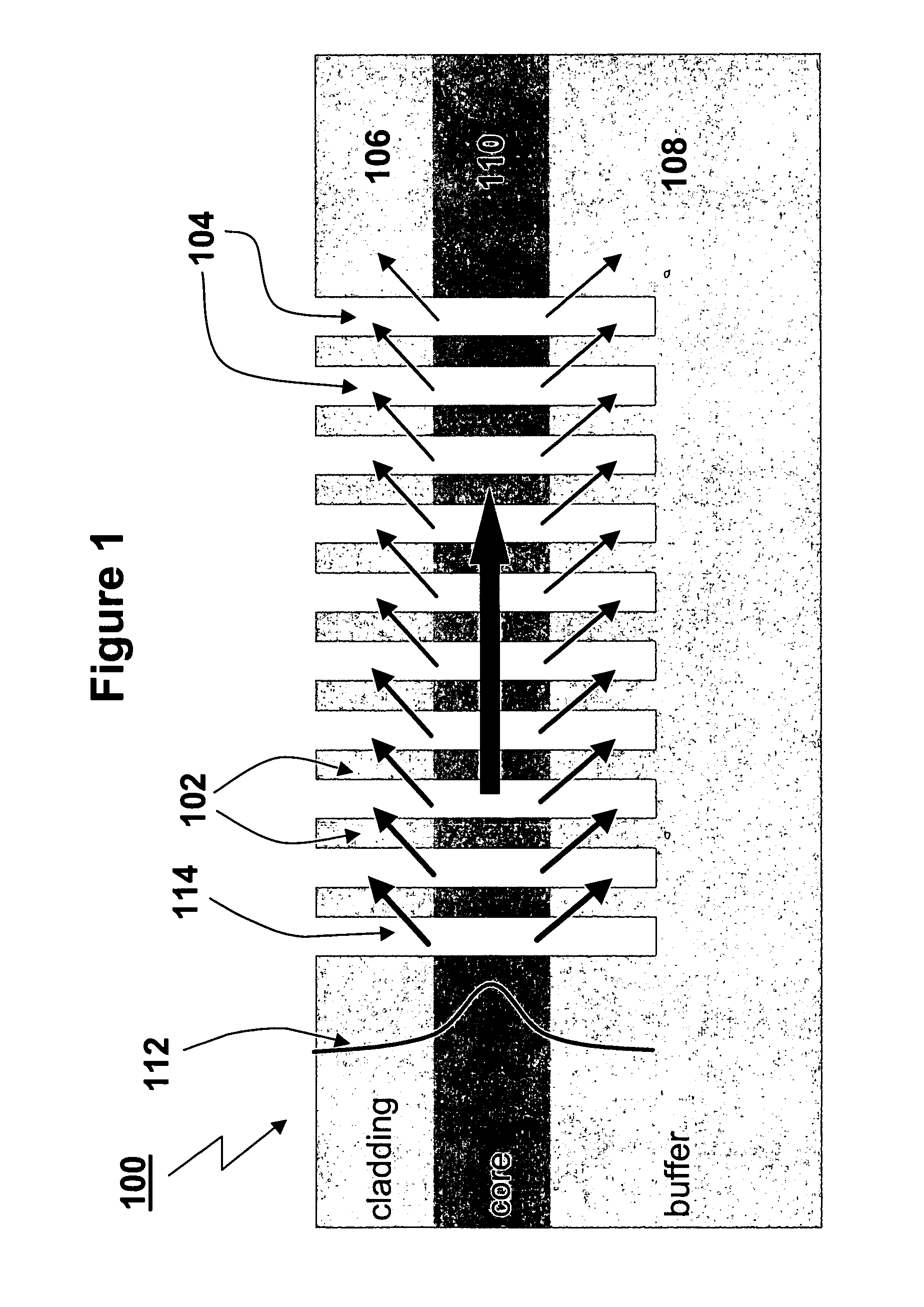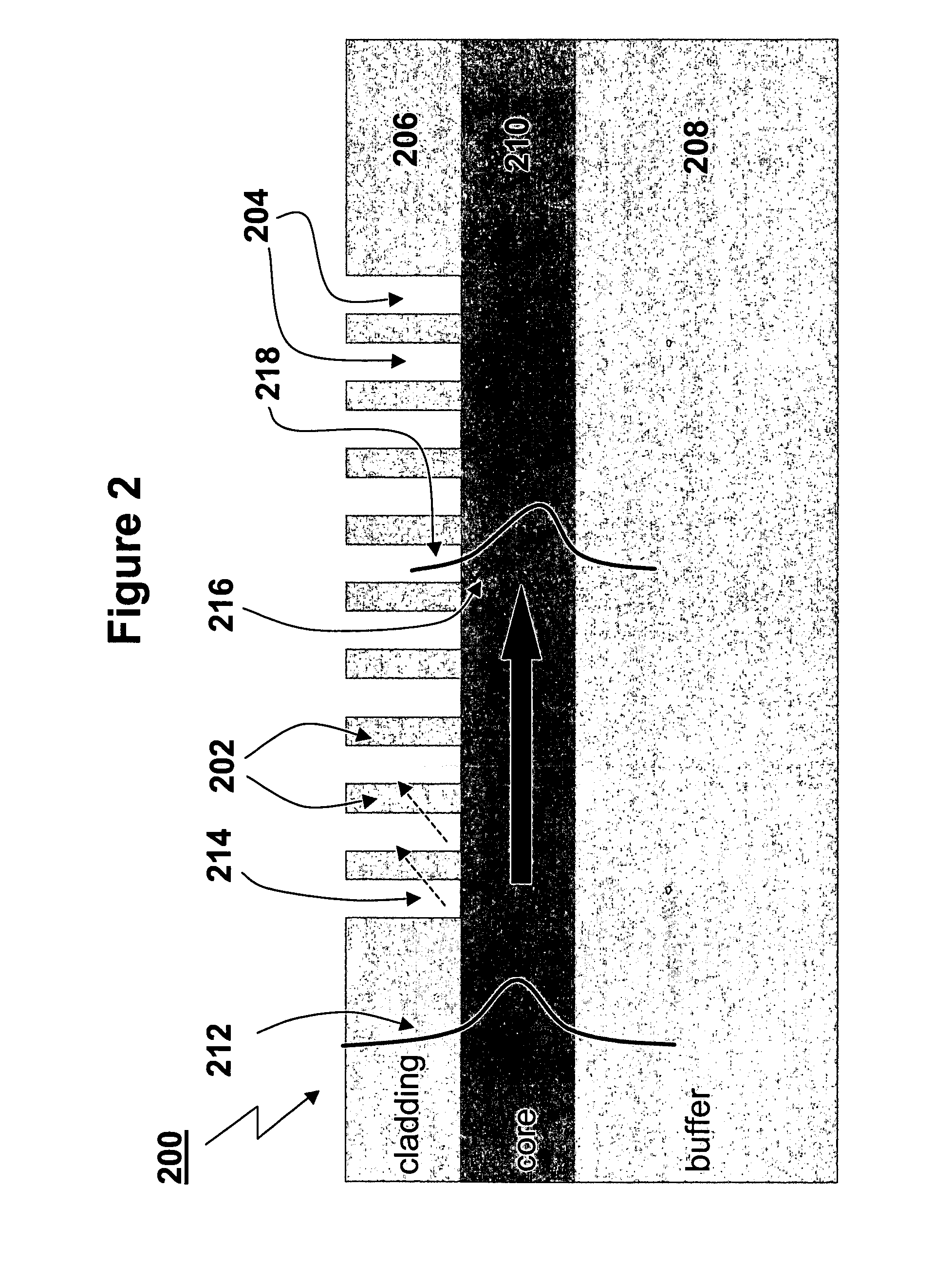Optical waveguide structure
a waveguide and optical waveguide technology, applied in the field of optical devices, can solve the problems of difficult to produce integrated optical circuits which are comparably small, formation of allowed and forbidden energy states, and difficult to produce integrated optical circuits, etc., to achieve the effect of improving the influence of the photonic band structure, easy fabrication, and increasing fabrication tolerances
- Summary
- Abstract
- Description
- Claims
- Application Information
AI Technical Summary
Benefits of technology
Problems solved by technology
Method used
Image
Examples
first embodiment
[0080]FIG. 5 shows the invention. Here, a planar waveguide structure 500 includes a substrate 512, a buffer layer 508, a core layer 510 and a cladding layer 506. The core 510 of the waveguide structure is disposed between the cladding layer 506 and the buffer layer 508. An array of mutually parallel trenches 502 is formed in the cladding layer 506, the trenches 502 being aligned perpendicularly to the direction of propagation of an optical signal through the waveguide 500. The trenches (or slots) 502 are air-filled.
second embodiment
[0081]FIG. 6 shows the invention. Here, a planar waveguide structure 600 includes a substrate 612, a buffer layer 608, a core layer 610 and a cladding layer 606. The core 610 of the waveguide structure is disposed between the cladding layer 606 and the buffer layer 608. An array of mutually parallel trenches 602 is formed in the cladding layer 606, the trenches 602 being aligned perpendicularly to the direction of propagation of an optical signal through the waveguide 600. The trenches (or slots) 502 are formed of a filler material having a higher dielectric constant than air.
[0082]FIG. 7 shows a third embodiment of the invention. Similarly to the first embodiment, FIG. 7 shows a planar waveguide structure 700 including a substrate 712, a buffer layer 708, a core layer 710 and a cladding layer 706. The core 710 of the waveguide structure is disposed between the cladding layer 706 and the buffer layer 708. An array of holes or rods 702 is formed in the cladding layer 706. The holes o...
sixth embodiment
[0086]FIG. 11 shows the invention. Here, a planar waveguide structure 1100 includes a substrate 1112, a buffer layer 1108, a core layer 1110 and a cladding layer 1106. The core 1110 of the waveguide structure is disposed between the cladding layer 1106 and the buffer layer 1108. An array of mutually parallel trenches 1102 is formed In the cladding layer 1106, the trenches 1102 being aligned perpendicularly to the direction of propagation of an optical signal through the waveguide 1100. The trenches (or slots) 1102 are formed of a filler material having a higher dielectric constant than air. In this embodiment, a further array of mutually parallel trenches 1114 is formed in an upper portion 1116 of the buffer layer 1108. Again the trenches 1114 are aligned perpendicularly to the direction of propagation of an optical signal and again the trenches (or slots) 1114 are formed of a filler material having a higher dielectric constant than air.
[0087]FIG. 12 shows a seventh embodiment of th...
PUM
 Login to View More
Login to View More Abstract
Description
Claims
Application Information
 Login to View More
Login to View More - R&D
- Intellectual Property
- Life Sciences
- Materials
- Tech Scout
- Unparalleled Data Quality
- Higher Quality Content
- 60% Fewer Hallucinations
Browse by: Latest US Patents, China's latest patents, Technical Efficacy Thesaurus, Application Domain, Technology Topic, Popular Technical Reports.
© 2025 PatSnap. All rights reserved.Legal|Privacy policy|Modern Slavery Act Transparency Statement|Sitemap|About US| Contact US: help@patsnap.com



